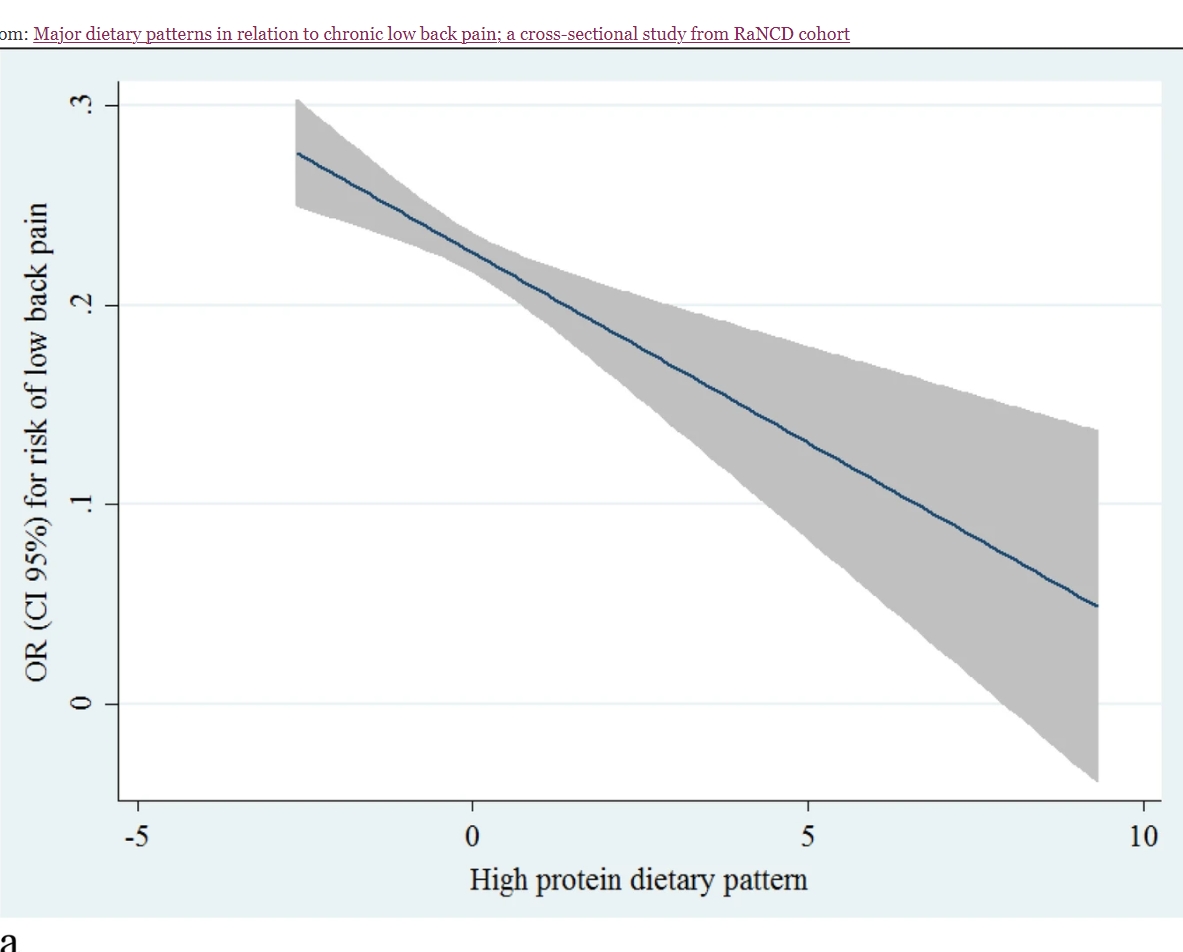Major dietary patterns in relation to chronic low back pain; a cross-sectional study from RaNCD cohort
Yahya Pasdar, Nutrition Journal volume 21, Article number: 28 (2022)
Background
Chronic low back pain (LBP) is the most common musculoskeletal pain that affects a person’s daily activities. This present study aimed at evaluating the relationship between major dietary pattern and Chronic LBP.
Methods
This cross-sectional analysis was examined 7686 Kurdish adults. The RaNCD cohort study physician diagnosed chronic LBP. Dietary patterns were derived using principal component analysis. The three identified dietary patterns derived were named: 1) the vegetarian diet included vegetables, whole grain, legumes, nuts, olive, vegetable oil, fruits, and fruit juice; 2) high protein diet related to higher adherence to red and white meat, legumes, nuts, and egg; and 3) energy-dense diet characterized with higher intake of salt, sweet, dessert, hydrogenated fat, soft drink, refined grain, tea, and coffee. Dietary pattern scores were divided into tertiles. Binary logistic regression in crude, adjusted odds ratios (OR) and 95% confidence intervals (CI) were used to determine this association.
Results
Twenty-two per cent of participants had chronic LBP. Higher adherence to high protein dietary pattern was inversely associated with chronic LBP in crude (OR: 0.79, 95% CI: 0.69–0.9) and adjusted model (for age, sex, smoking, drinking, diabetes, physical activity, body mass index, and waist circumference) (OR: 0.84, 95% CI: 0.72–0.97). In addition, after controlling for the mentioned potential confounders, participants in the highest category of energy dense diet were positively associated with chronic LBP compared with those in the lowest category (OR: 1.13, 95% CI: 1.01–1.32).
Conclusions
Higher adherence to the high protein diet was inversely related to chronic LBP prevalence. In addition, we found that following energy dense diet was positively associated with chronic LBP.














